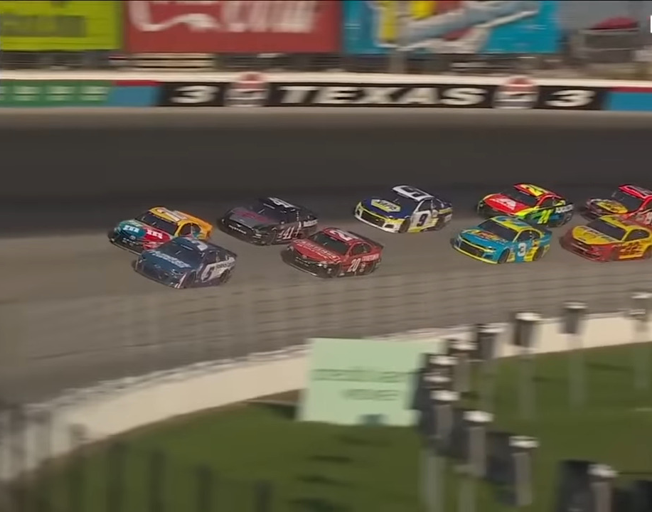
This weekend is the NASCAR All-Star Race at Texas Motor Speedway. It is all about the money and the braggin’ rights!
That’s right. There are no points on the line. No “win and you’re in” Playoff implications.
For the second consecutive year the NASCAR All-Star Race is being held at Texas Motor Speedway. Here is what the drivers will face on that track.
Texas Motor Speedway Data
Track Size: 1.5-mile
Banking/Turn 1 & 2: 20 degrees
Banking/Turn 3 & 4: 24 degrees
Banking/Frontstretch & Backstretch: 5 degrees
Frontstretch Length: 2,250 feet
Backstretch Length: 1,330 feet
This race is unlike any other race of the year. Here are the formats for qualifying, the NASCAR All-Star Open and the NASCAR All-Star Race.
The NASCAR All-Star Qualifying format is as follows:
- Opening round is the traditional single-car, one-lap format in reverse order of the current 2022 owner points.
- Fastest eight qualifiers transfer to a three-round, head-to-head elimination bracket.
- Elimination bracket will feature two cars staged in adjacent pit stalls near the end of pit road.
- At the sound of an alert, each pit crew will perform a four-tire stop and, at the drop of the jack, drivers will exit their pit stalls (with no speed limit) onto the track.
- First car back to the start/finish line advances to the next round.
- Final pairing competes for the pole.
NASCAR All-Star Open format is as follows:
- The NASCAR All-Star Open will run immediately prior to the NASCAR All-Star Race and will include three stages (20 laps / 20 laps / 10 laps).
- The winner of each stage will earn a spot in the NASCAR All-Star Race.
- The winner of the Fan Vote will also earn a spot in the NASCAR All-Star Race. Fans may vote for their favorite driver by visiting NASCAR.com.
The NASCAR All-Star Race format is as follows:
The race will consist of four stages, with the first three 25 laps in length and the fourth and final being a 50-lap shootout for the $1 million prize. The new format has provided a major incentive to win any of the opening three stages or the pit stop competition during the break between Stages 2 and 3.
- Stage 1 (25 laps): Stage 1 winner will start on the pole in the final stage as long as he finishes 15th or better in Stages 2 and 3.
- Stage 2 (25 laps): Stage 2 winner starts second in final stage as long as he finishes 15th or better in Stage 3.
- Special Stage Break (Pit Stop Competition): Each team must pit and perform a four-tire stop. The team with the shortest time on pit road (pit in/pit out) wins the pit crew award and the driver will start fourth in the final stage as long as he finishes 15th or better in Stage 3.
- Stage 3 (25 laps): Stage 3 winner starts third in final stage.
- Stage 4 (50 laps): Stage 1 winner starts first, Stage 2 winner second, Stage 3 winner third and pit stop competition winner fourth. If a “natural” caution occurs between laps 15-25 of the final stage, standard race procedures will be in effect. If no “natural” caution occurs during that time, NASCAR will call an “All Star” competition caution.
- Winner of Stage 4 earns $1 million.
The NASCAR All-Star Race should be fun to watch. The drivers have nothing to lose and ONE MILLION DOLLARS to gain! That means they will go all-out to win. We will see who becomes this year’s NASCAR Million Dollar Man starting at 4:30 p.m. central time (5:30 p.m. eastern time) with the NASCAR All-Star Open followed by the NASCAR All-Star Race at Texas Motor Speedway Sunday, May 22nd.
By: Buck Stevens







